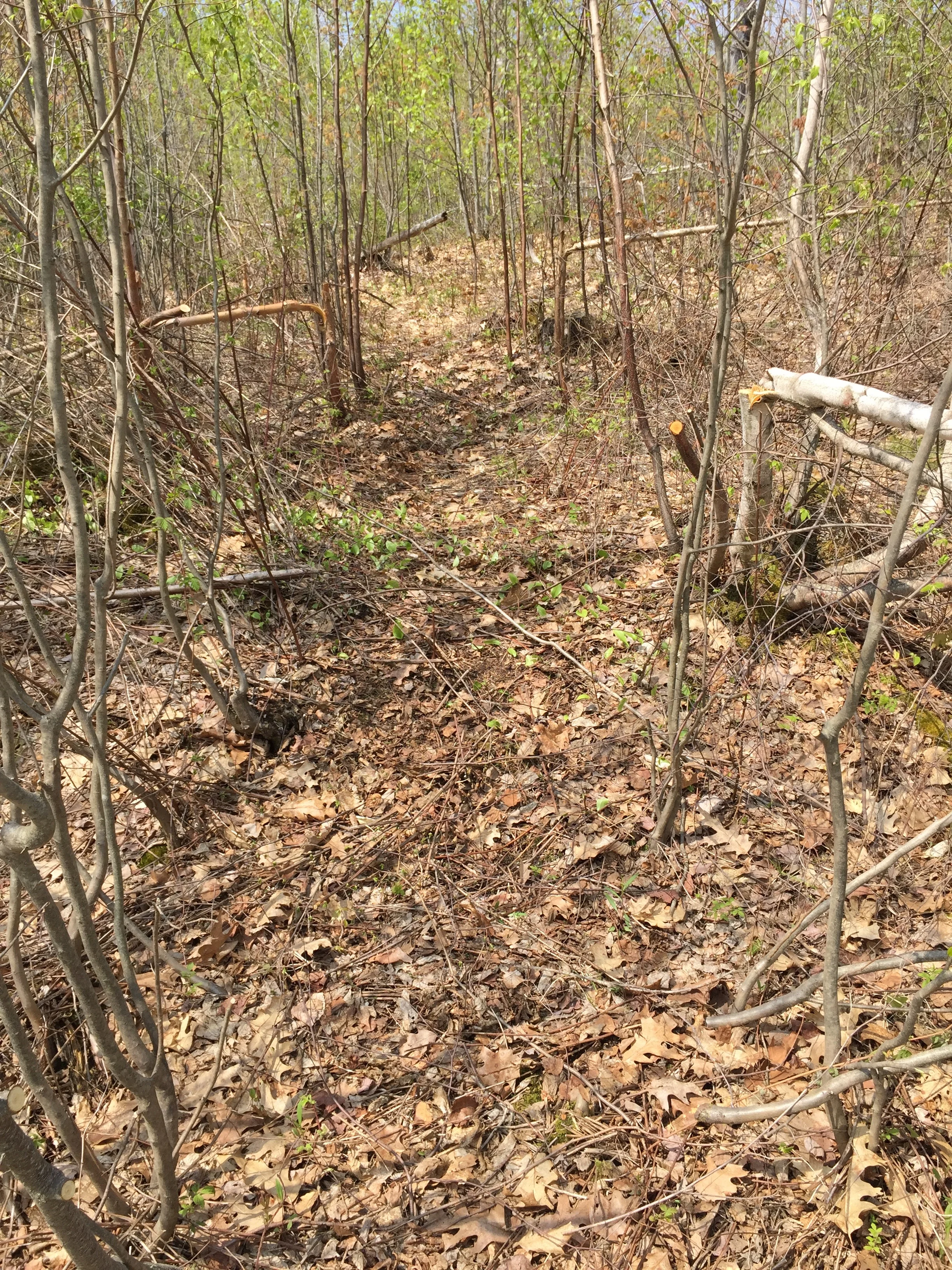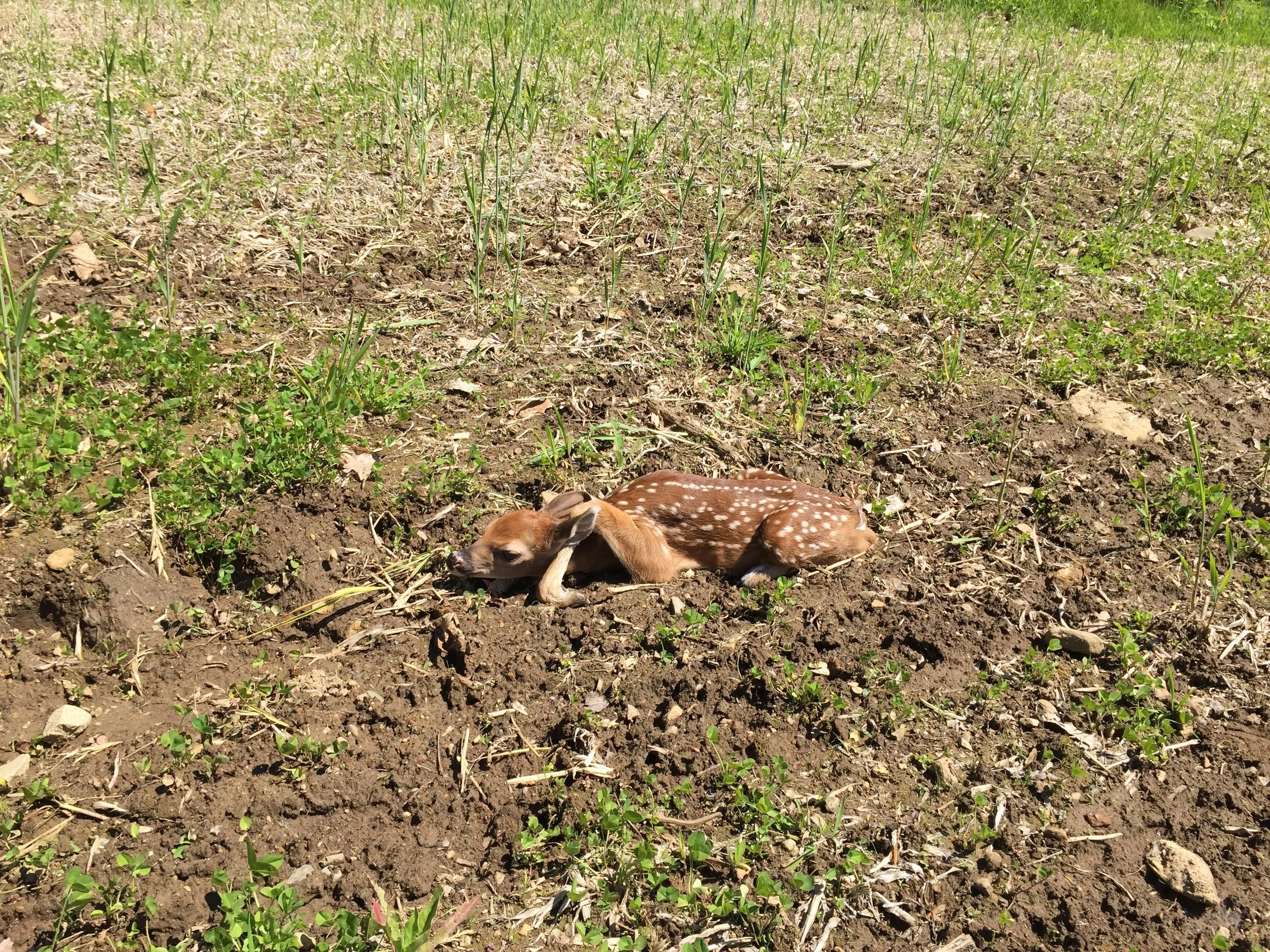Early 2017 Land Management Case Study
What an amazing surprise, awesome looking clover!
2017 started with a shock when I came up from Florida in early May and took my first tour of the land. Over the winter I had given a lot of thought to my food plots, and I was very concerned that the quality of the soil in the large plot and the Instep plot were so poor, even with the addition of all that manure, that I would never get a good crop of clover established. 100 cubic yards of cow manure is a literal s**t-load of material - around five large dump trucks full - but I had spread it over a couple acres of soil that looked more like dirty bank-run gravel than anything.
I had been thinking that the soil was probably draining so fast that clover roots were too shallow to get the moisture they needed to survive extended periods of dry weather. I had planned to scrap the clover and try planting alfalfa because it has deep roots and works well in well-drained areas. The shock came when I took my first look at the large food plot - it was covered with lush clover!
The cows had been grazing on red clover and the seeds had passed through them, into the manure, and onto my fields. It was incredible! The large plot would now be named the Big Clover plot, and I was off and running. This amount of forage, in a couple acres of food plots that were next to good bedding and far from human activity, could attract and hold several doe groups and solitary bucks. I expected to be able to see a solid increase in hunting opportunities in the fall of 2017.
2017 plan for the 61 acre parcel
My revised plan for 2017 was to maintain my clover plots by spraying them for grasses and broadleaf weeds, to replant the Barn and Lightning plots that had been in oats in 2016, and to encourage deer movement to pass by the stands in the southern part of the land by creating trails and barriers. I also noticed a for-sale sign on the abutting 47 acre property to the south, so I would look into that as well.
The chunk of my land adjacent to the Big Clover plot on the south side was thick with hardwood saplings and fairly flat, and looked like a great chunk of bedding cover in close proximity to a good food source. The natural flow of the land did not give deer any compelling reason to enter or exit this bedding area walking by my stands during daylight, so I would need to make some changes. I wanted the deer to use only a few entrances and exits, so I planned to cut trails through the bedding area to direct their movement. I didn’t want them wandering in or out of the bedding area just anywhere, so I would hinge-cut saplings to form barricades that would be much easier for the deer to walk around.
On the plan to the right, the existing improvements are in black and the planned ones are color coded - the hinge-cut barriers are orange and the cut trails are blue. The blue lines forming an X are the trails through the bedding area that would enter/exit at three of my established tree stands, as well as the Large Clover plot where I thought I might also set-up a stand.
A hinge-cut barrier keeps deer out
To hinge-cut a tree you cut partway through the trunk and the tree either bends over in the intended direction or you push it over. The goal is to have the tree bent over where you want it while still leaving enough of the xylem and phloem layers on the uncut side intact to keep food and water flowing inside the tree to keep it alive. There is a lot of information and videos online that explain hinge-cutting in detail.
When improving land for deer management, hinge-cutting is used to provide cover in bedding areas or barriers to prevent deer from moving where you don’t want them. At this point I would be using hinge-cutting to create barriers about 15 to 20 feet wide that would funnel the deer to my stands. Most of the trees I would be cutting are about 10 years old and two to six inches in diameter, so I would cut them with a hand saw and push them over. I like to cut them at various points off the ground so the deer are dissuaded from either jumping over or crawling under. They can still get through if they have to, but it’s easiest for them to walk around. The trails I cut will make it even easier to avoid the barriers.
Cut trails make it easier for deer to travel where you want them
The deer trails are just paths I make by cutting the thick sapling growth wide enough to comfortably walk through. The cover is thick, and in summer it is almost impossible to see where you are because of the green leaves, so I like to flag the trails in the winter or early spring when the trees are bare. I pulled a real bone-head move one year when the hardware store was out of red or orange surveyor’s tape and I bought florescent light green. It was easy to see in the winter, but the flags completely disappeared in the summer by blending in with the green leaves on the trees when I wanted to cut the trail!
The Barn plot and the Lightning plot had been planted in oats in the second half of 2016 and would need to be replanted. Oats are an annual crop that are easy to grow and produce a lot of forage fast, but they die over the winter so you need to replace them with another annual crop or a perennial. I had over-seeded the oats with clover, hoping that the perennial clover would replace the oats in the spring, but I found in the spring of 2017 that the clover was too weak to sustain the plot. I didn’t think the deer were crazy about the oats, so I thought I’d try something else. A blend of clover and other deer forage seemed interesting, so I disked-up the two plots and planted Antler King Trophy Clover Mix, a mix of clover, chicory, and rapeseed. It grew well and the deer loved it. They don’t have it listed in the advertising, but there also seemed to be a large amount of kale in the plot. While the deer didn’t devour the kale, they did eat it, and it stayed lush longer into the fall. The clover was a perennial so I wouldn’t have to replant these plots in 2018
A fawn “hides” in the Barn Plot
A field of perennial clover will last for many years, but it won’t stay a lush monoculture forage unless you put in some work. Grass and broadleaf weeds will constantly try to invade your food plot, so the first line of defense is to mow them regularly to keep the weeds from shading out the clover. The second tactic is to spray your clover plots two times a year with two types of herbicides - one for the grasses and one for the broadleaf. They are formulated to kill the plants you don’t want while leaving the clover alone, and in my experience they work well. I use Slay herbicide for broadleaf weeds and Arrest Max for grasses. These herbicides are sold by the Whitetail Institute and they are not cheap - there may be other brands that work just as well and are less expensive, but I’ve been sticking with what I know works. You can mix them together to cut down on your time - add some crop oil to help them work. I started out using a Fimco electric sprayer that connected to my three-point hitch, but I had to splice in some extra cord to reach the tractor’s battery - and after a few years the tank started to leak. I switched to a sprayer that runs off my PTO and love it.
Old field with planted 50+ years ago with white pines
As I mentioned, the land to the south was for sale, so I contacted the broker to find out what the story was. I had walked that land and had also hunted it, so I knew it well. It was 47 heavily forested acres, with most of it in mature white pine and hemlock, and a stream ran through a deep ravine. It hadn’t been logged for a long time and most of it contained little browse or bedding cover. I like the tennis ball test for healthy deer cover - if you throw a ball and can still see it, there isn’t a high enough stem count to provide forage and cover for a significant deer population. I would be able to see a tennis ball in most of that woods.
One section of the parcel, however, was very interesting. It appeared to be an old field that had been planted around 50 years ago with white pines in rows six feet apart. They were now about 50 feet tall and so close together that they shaded out most anything trying to grow on the ground. I had hunted that area a couple years back and was amazed that there were so few trees straight enough for a climbing treestand - a weevil infestation had caused the trees to grow crooked when they were saplings. The interesting thing about that area was the ground - you could scrape the pine needles away with the heel of your boot and find soft loam. This old field could be reclaimed, turned into a large food plot, giving me about seven acres of forage to sustain a significant deer population. Turning the old field into a large food plot could be very important because this part of the Augusta Expanded Archery Zone had little to no agricultural crop land. After some negotiation, I purchased the 47 acres, giving me now a total parcel of 108 acres.
With the additional land, the 2017 plan changed dramatically!
To read more, click on: Late 2017 Land Management.
To go back to 2016 Land Management Click Here.





